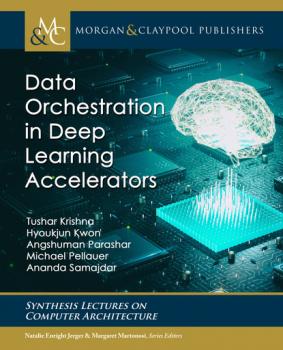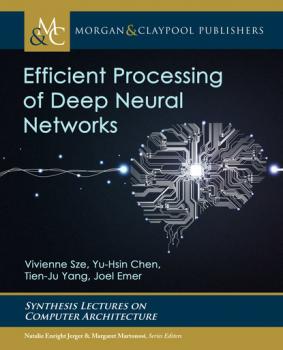Программы
Различные книги в жанре ПрограммыGet The Picture
Whether you just bought a brand-new, shiny DSLR or ILC or want to make the most of a secondhand model, you’re in good hands with The Beginners' Photography Handbook, the latest, most up-to-date guide on digital photography—all from the experts at Popular Photography magazine.
Today’s technology has made DSLR/ILC cameras more powerful (and more reasonably priced) than ever, and getting the perfect shot has never been easier—if you know how to get the most out of your machine. Popular Photography magazine walks you through all the functions, modes, buttons, and dials on the latest standard models, providing solid technical advice in handy tips paired with beautiful, aspirational imagery that demonstrates each tactic. With sections on:
DSLR Fundamentals: Your go-to guide for basic camera functionality, including exposure, (aperture, ISO, and shutter speed, focus), and white balance.
Next-Level Settings: Once you’ve mastered the essentials, take a tour through your camera’s various shooting modes (aperture-priority, shutter-priority, portrait, macro, and more) and experiment with its on-camera flash, bracketing functions, and shooting RAW. Explore your lens’s zoom, image stabilization, and other capabilities, too.
Bonus Gear: For photo enthusiasts looking to build a starter photography kit beyond their basic camera body; study up on accessory flash units, lenses, release triggers, and simple, inexpensive lighting modifiers.
For amateur photographers, there is no better resource on DSLR/ILC photography.
Smart Data Discovery Using SAS Viya
Gain Powerful Insights with SAS Viya! Whether you are an executive, departmental decision maker, or analyst, the need to leverage data and analytical techniques in order make critical business decisions is now crucial to every part of an organization. Smart Data Discovery with SAS Viya: Powerful Techniques for Deeper Insights provides you with the necessary knowledge and skills to conduct a smart discovery process and empower you to ask more complex questions using your data. The book highlights key components of a smart data discovery process utilizing advanced machine learning techniques, powerful capabilities from SAS Viya, and finally brings it all together using real examples and applications. With its step-by-step approach and integrated examples, the book provides a relevant and practical guide to insight discovery that goes beyond traditional charts and graphs. By showcasing the powerful visual modeling capabilities of SAS Viya, it also opens up the world of advanced analytics and machine learning techniques to a much broader set of audiences.
Thermodynamics of Complex Systems
Professor Vladimir N. Pokrovskii
This text provides a concise introduction to non-equilibrium thermodynamics of open, complex systems using a first-principles approach. In the first chapters, the principles of thermodynamics of complex systems are discussed. The subsequent chapters apply the principles to the dynamics of chemical reactions and complex fluids, growth and development of biological organisms, and the dynamics of social structures and institutes. The final chapter discusses the principles of science as an artificial system. The book is a valuable reference text for researchers interested in thermodynamics and complex systems, and useful supplementary reading for graduate courses on advanced thermodynamics, thermodynamics of non-equilibrium systems and thermodynamics of complex/open systems. Key Features Provides a concise introduction to non-equilibrium thermodynamics of open complex systems, using a first-principles approach Discusses thermodynamics as the universal tool for the description of reality Looks at complex systems, such as biological organisms, populations and subsystems of human society from the perspective of thermodynamics Covers principles, applications and statistical interpretations
Efficient Processing of Deep Neural Networks
This book provides a structured treatment of the key principles and techniques for enabling efficient processing of deep neural networks (DNNs). DNNs are currently widely used for many artificial intelligence (AI) applications, including computer vision, speech recognition, and robotics. While DNNs deliver state-of-the-art accuracy on many AI tasks, it comes at the cost of high computational complexity. Therefore, techniques that enable efficient processing of deep neural networks to improve key metrics—such as energy-efficiency, throughput, and latency—without sacrificing accuracy or increasing hardware costs are critical to enabling the wide deployment of DNNs in AI systems. The book includes background on DNN processing; a description and taxonomy of hardware architectural approaches for designing DNN accelerators; key metrics for evaluating and comparing different designs; features of DNN processing that are amenable to hardware/algorithm co-design to improve energy efficiency and throughput; and opportunities for applying new technologies. Readers will find a structured introduction to the field as well as formalization and organization of key concepts from contemporary work that provide insights that may spark new ideas.
Embracing the Power of AI
Many industries are leveraging artificial intelligence (AI) to stay ahead of the curve. As cognitive and AI platforms become smarter, companies are using deep neural networks to give them abilities they didn’t have before. It’s the augmented intelligence revolution, with AI enhancing existing businesses and creating even more opportunity for those willing to embrace it. Recent advancements in AI—including machine learning (ML), deep learning, and natural language processing (NLP)—have ignited a dialogue about the ways businesses interact with their customers, partners, and competitors. <i>Embracing the Power of AI</i> will help you demystify deep learning, machine learning, and artificial intelligence—and embrace the augmented intelligence revolution ahead.
A Primer on Memory Consistency and Cache Coherence
Many modern computer systems, including homogeneous and heterogeneous architectures, support shared memory in hardware. In a shared memory system, each of the processor cores may read and write to a single shared address space. For a shared memory machine, the memory consistency model defines the architecturally visible behavior of its memory system. Consistency definitions provide rules about loads and stores (or memory reads and writes) and how they act upon memory. As part of supporting a memory consistency model, many machines also provide cache coherence protocols that ensure that multiple cached copies of data are kept up-to-date. The goal of this primer is to provide readers with a basic understanding of consistency and coherence. This understanding includes both the issues that must be solved as well as a variety of solutions. We present both high-level concepts as well as specific, concrete examples from real-world systems. This second edition reflects a decade of advancements since the first edition and includes, among other more modest changes, two new chapters: one on consistency and coherence for non-CPU accelerators (with a focus on GPUs) and one that points to formal work and tools on consistency and coherence.
Data Structures and Algorithm Analysis in Java, Third Edition
With its focus on creating efficient data structures and algorithms, this comprehensive text helps readers understand how to select or design the tools that will best solve specific problems. It uses Java as the programming language and is suitable for second-year data structure courses and computer science courses in algorithm analysis. Techniques for representing data are presented within the context of assessing costs and benefits, promoting an understanding of the principles of algorithm analysis and the effects of a chosen physical medium. The text also explores tradeoff issues, familiarizes readers with the most commonly used data structures and their algorithms, and discusses matching appropriate data structures to applications. The author offers explicit coverage of design patterns encountered in the course of programming the book's basic data structures and algorithms. Numerous examples appear throughout the text.
Data Structures and Algorithm Analysis in C++, Third Edition
With its focus on creating efficient data structures and algorithms, this comprehensive text helps readers understand how to select or design the tools that will best solve specific problems. It uses Microsoft C++ as the programming language and is suitable for second-year data structure courses and computer science courses in algorithm analysis.Techniques for representing data are presented within the context of assessing costs and benefits, promoting an understanding of the principles of algorithm analysis and the effects of a chosen physical medium. The text also explores tradeoff issues, familiarizes readers with the most commonly used data structures and their algorithms, and discusses matching appropriate data structures to applications. The author offers explicit coverage of design patterns encountered in the course of programming the book's basic data structures and algorithms. Numerous examples appear throughout the text.









